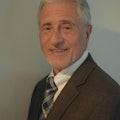Barry On Batteries: Lithium Brine Extraction Requires Flexible Technology
With lithium demand on the rise, the big question is how to meet the need.
As discussed in “Barry On Batteries — Chemical Industry Takes the EV Driver’s Seat,” lithium production is a chemical-based process. By this, I mean that there are precipitation, purification and washing steps.
The production process typically involves the mining of lithium-containing rock, such as spodumene, or the extraction of lithium-containing salts from underground brine reservoirs.
Brine extraction has many advantages over ore mining because the latter requires more processing steps, higher energy consumption and more raw material. All of this makes it a costly and less environmentally sound process when compared to brine extraction. Still, there are different methods for lithium brine extraction that producers should consider based on their production requirements.
The Brine Approach to Processing Lithium
Lithium brine deposits are accumulations of saline groundwater that producers enrich in dissolved lithium. Methods for extracting lithium from brine are dependent on the particular chemistry found at each deposit. After extracting lithium, producers pump the excess brine back underground.
Brine extraction presents challenges that differ from traditional chemical manufacturing environments. Unlike in a chemical plant where manufacturers can easily identify and reproduce solids and liquids, naturally occurring brines have a wide range of solids concentrations, particle sizes, shapes and characteristics. That’s why producers need to use technology that is flexible enough to handle the variability in the slurry feed and produce the desired quality.
The two most common technologies for initial bulk pretreatment separation are pusher centrifuges and vacuum belt filters.
A pusher centrifuge contains a slotted bowl covered by a metal screen and rotates within a horizontal shaft and housing. The centrifuge contains a pusher (reciprocating disk) that moves the cake along the length of the drum or bowl. The clarified liquid passes through while the solids form a cake on the surface for washing. The cake then moves along the basket for dewatering. A pusher centrifuge offers the benefits of a concentrated slurry discharge for further downstream processing, while also being able to handle feed-slurry variability.
If the process requires more effective washing and a dry cake discharge, then a vacuum belt filter would be a better option. Two types are available: either a rubber-belt design or an indexing design.
In a rubber-belt design, the belt carries the filter cloth, so all steps are continuous. The indexing design eliminates the rubber belt and either the cloth or trays index in a stepwise manner. This configuration allows the filtration, cake washing and drying to occur on a fixed cake with more process time. The choice of rubber belt or index design depends upon the filtration flux rate, washing and drying requirements and solids characteristics. For example, filtration times in seconds versus minutes, a rubber belt is more appropriate. For cake washing, if there is a “soaking” step or increased residence time, then an indexing design would be a better approach. Similarly, if drying requires multiple steps such as gas blowing, pressing and vacuum rather than just vacuum, an indexing design should be selected.
The Future — Direct Lithium Extraction
While these solid-liquid separation methods both suit particular applications, direct lithium extraction (DLE) represents another approach to lithium production. Although in their infancy, these technologies promise to increase supply, reduce the industry’s environmental, social and governance (ESG) footprint and lower costs. My next column will focus on DLE technologies and the solid-liquid separation required.
About the Author
Barry Perlmutter
President of Perlmutter & Idea Development (P&ID) LLC
Barry Perlmutter is president of Perlmutter & Idea Development (P&ID) LLC. He has over 40 years of science, engineering and business marketing experience in the field of solid-liquid separation including filtration, centrifugation, process drying, mixing and recycling. His strong professional skills focus on process and project solutions, innovation strategies and execution, market expansion and business development. Barry has published and presented worldwide on applications in the chemical, pharmaceutical, and energy/environmental industries and has been responsible for introducing many European technologies into the Americas marketplace. His two books, published by Elsevier, Amsterdam, "Handbook of Solid-Liquid Filtration" and "Integration & Optimization of Unit Operations" are used worldwide for process guidance.

